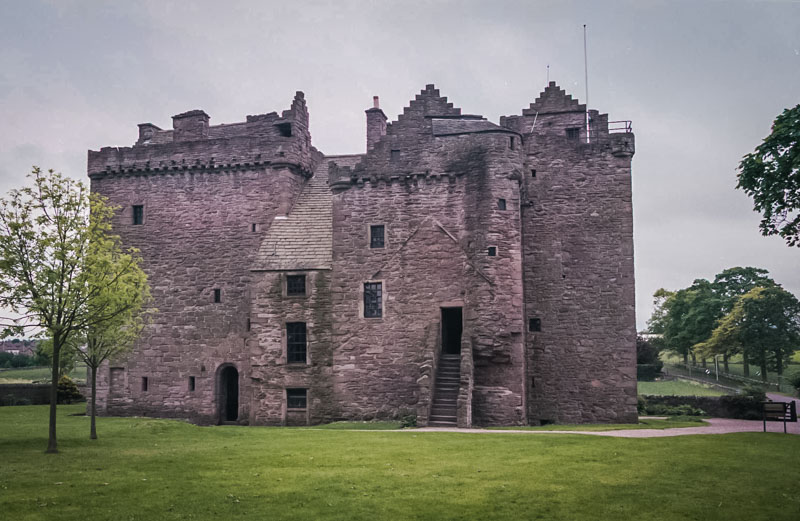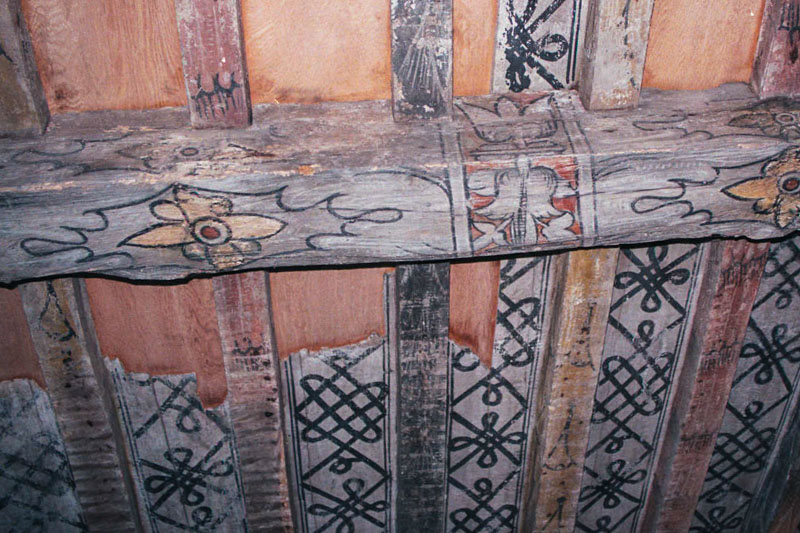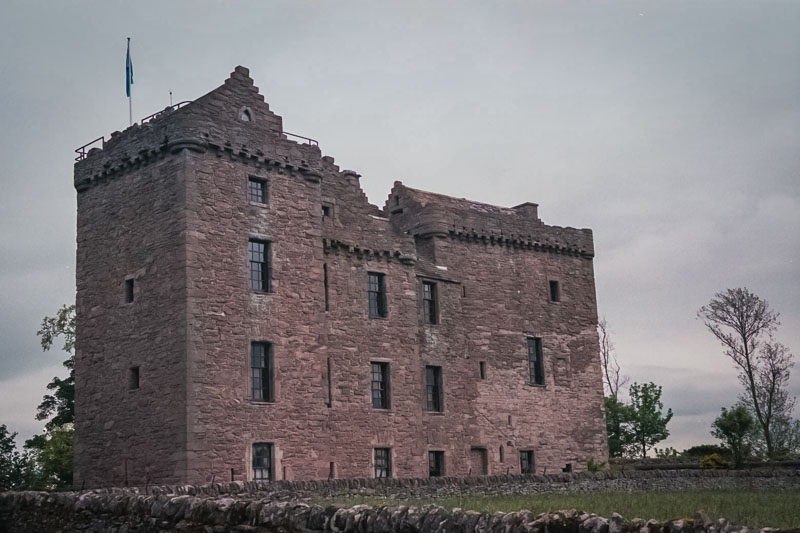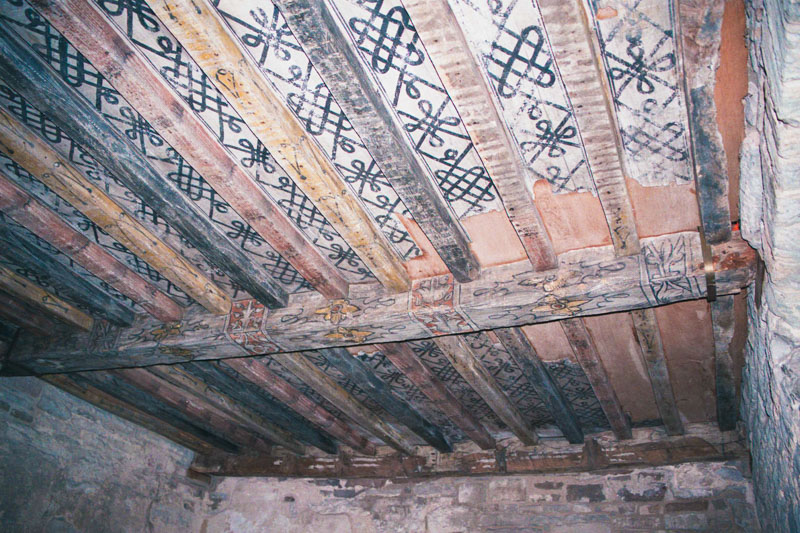
Huntingtower is an unusual, well-preserved castle, consisting of three different phases of building. The oldest part is a 15th century rectangular keep of three storeys and a garret. Nearby, but not touching the first tower, is a 16th century l-plan tower house. When the castle was built, the only communication between the two was a wooden bridge. Towards the end of the 16th century, a connecting range of three stories was built, containing a stair shared by the entire keep.
The property was held by the Ruthvens (see Dirleton Castle) from the 12th century, and was originaly called Ruthven Castle. Mary, Queen of Scots visited here in 1565 while on her honeymoon with Darnley. In 1582 the 4th Lord of Ruthven kidnapped the young James VI and held him in Huntingtower for a year. The earl was beheaded in 1585 for his trouble.
In 1600, a later Earl of Gowrie and his brother were murdered in Gowrie House. The Ruthvens forfeited, and their name proscribed. The castle, renamed Huntingtower, remained a royal property until Charles I gave it to William Murray, 1st Earl of Dysart. It later passed to the Stewarts, and was used to house labourers.

The larger tower has been added to — the differece in the masonry can still be seen where they added stories. The walls were plastered, and the ceiling were decorated. Some rooms have fine painted ceilings, mural paintings, and plasterwork in place. The painted ceiling in the eastern tower is one of the earliest of it’s kind, dating from 1540. Another unusual feature is the dovecote inside the garret of the western tower.
The space between the towers (although filled in during the 17th century) is called Maiden’s Leap. A daughter of the Earl of Gowrie was supposed to have jumped the distance between the towers (9’9′, over a 60′ drop!) when she was about to be discovered in the apartments of her lover. She leaped back to her own tower and was in her own bed by the time her mother appeared to check on her. The two eloped the following night.
The castle and grounds are reputed to be haunted by ‘My Lady Greensleeves’. Her footsteps are heard along with the rustle of her gown and she has even deigned to appear on several occassions


Like Neidpath Castle, Huntingtower is a reminder of how comfortable and luxurious these castles can be. Far from the rough stone piles we see today, they were painted and decorated, with plaster cornices, elaborately decorated doors. Rooms were plastered and bright, with natural light. It’s sometimes hard to see the comfortable homes these castles once were, but Huntingtower was a good example. It was interesting.
Like a number of other castles, the caretakers were preparing for a wedding in the tall tower.


